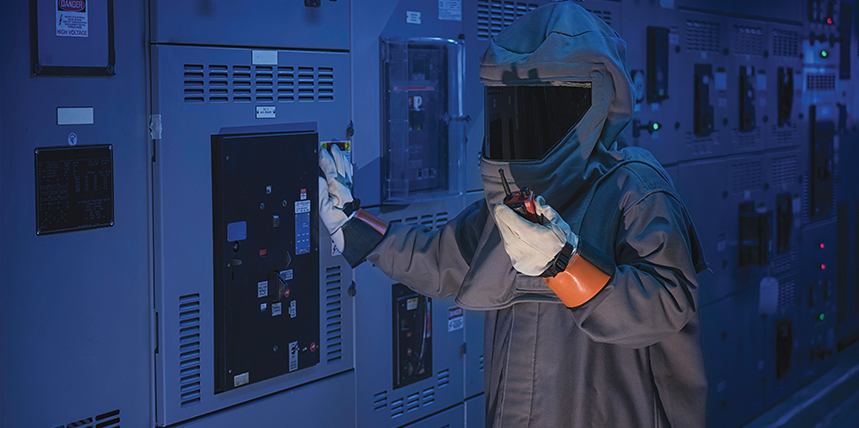In the Spring 2022 edition of NETA World, Part 1 of this article provided a brief history and evolution of electrical safety over the past 50 years. It was during this period that OSHA was formed and NFPA began developing the 70E standard. We also reviewed some of the key changes from the original 2002 edition of IEEE 1584 to the second edition in 2018, specifically examining the newly recommended arc flash calculation process and variables included in the calculations.
In Part 2, we discuss the relevant impact of these changes and how they affect the calculated incident energy levels that we depend on to select adequate PPE and keep our workers safe.
Let’s start by considering the most frequently asked questions related to this new arc flash calculation process:
- Does a new study need to be performed using the new method?
- How do the old and new methods compare with respect to incident energy calculations, and how significant are these changes to the results of the analysis?
- Will the new calculations result in significantly different incident energy (IE) values?
COMPARISON OF METHODS
While many variables must be considered when comparing the two methods, I’ve put together some scenarios that provide a practical comparison that answers these questions. The comparison focuses on low-voltage systems, as these are the most prevalent systems workers are exposed to, and this is where most accidents occur.
Two low-voltage scenarios are examined. The first is a 208 V system; the second is a 480 V system. For both scenarios, a fixed event duration of 83.3 ms was used. Designed interruption times for molded-case circuit breakers are approximately 8.33 ms (1/2 cycle) and 50 ms (3 cycles) for power circuit breakers. For the following examples, a fixed duration time of 83.3 ms (5 cycles) was used. As a result of using a fixed duration for the calculations, the reduced arcing current calculation was not applicable for this analysis.
The following parameters were used in the analysis:
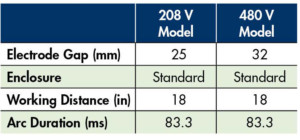
Table 1: Parameters Used in Arc Flash Calculations for Two Voltage Levels
The IEEE 1584-2002 calculations for a low-voltage arc in an enclosure were compared to the 2018 calculations for the vertical conductor-electrode configuration (VCB), vertical conductor-electrode terminated in a metal enclosure (VCBB), and horizontal conductor-electrode terminated in a metal enclosure (HCB) configurations. The analysis was performed utilizing a bolted fault current ranging from 2 kA to 100 kA.
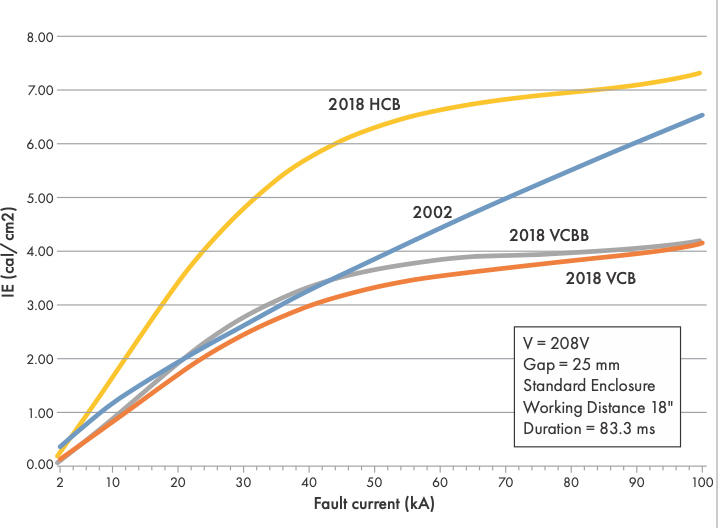
Figure 1: 2002 vs. 2018 IE Calculated Result Comparison at 208 V
Figure 1 and Figure 2 show the incident energy results of this analysis. Figure 1 shows the 2002 versus 2018 incident energy (IE) results for the 208 V example. Figure 2 shows the comparison for the 480 V example.
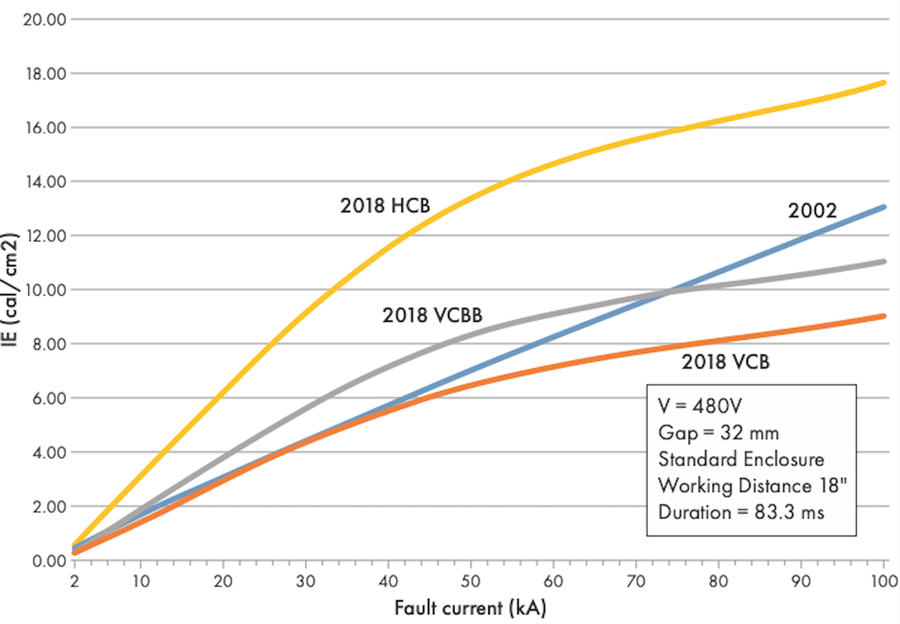
Figure 2: 2002 vs. 2018 IE Calculated Result Comparison at 480 V
The HCB calculations result in a significantly higher incident energy than the VCB/VCBB calculated energies and the energy calculated under the 2002 model when considering a typical range of bolted fault current values. The HCB model is representative of large power circuit breaker cubicles in switchgear, junction boxes, and some disconnects versus what is typically found in smaller panelboards (VCB/VCBB). This higher IE for HCB equipment is the result of the horizontal electrodes ejecting the arc outwards directly towards the opening and worker. If an arc occurs in the stab area of a cubicle, and a circuit breaker is present, the breaker is likely to disrupt the arc ejection and decrease the IE below the calculated value.[1]
However, during the testing and development of IE equations, a breaker was not present in the cubicle, and there are currently no test data or equations to quantify or support this scenario. The vertical electrode models result in less incident energy than the HCB orientation because the arc tends to be ejected downward and then reflected outward towards the worker. Depending on the geometry of the enclosure and the position of the worker, this could intensify the IE at the worker’s legs and feet.
For the 208 V example and for equipment with a vertical bus, the 2002 and 2018 analysis methods provide similar results over a large range of fault currents. For the 480 V example, the vertical bus calculations also provide relatively similar results, but the VCBB does tend above the 2002 calculated values a bit more than in the 208 V calculations. For both the 208 V and 480 V calculations, the HCB results immediately deviate above the 2002 results and remain significantly higher over the range of currents studied.
For larger equipment (e.g., power circuit breakers), typically with horizontal stab construction, the new calculations indicate that the previously recommended arc-rated personal protective equipment (AR PPE) may not be sufficient to protect workers from serious injury. Work that has been previously performed with minimal AR PPE may now require a much higher AR PPE rating. The new IE calculated results for equipment with a vertically oriented bus (electrodes) remain similar to the 2002 calculated results. When performing the analysis using the new methods, careful consideration must be given to the model parameters to ensure accurate results are rendered based on the best available information.
Figure 3 compares the arcing current from the 2002 and 2018 calculation methods using the previous parameters and assumptions for the 208 V and 480 V scenarios. This graph shows that the 2018 calculated arcing currents are typically 20%–25% higher than the 2002 values over the typical fault current range. However, higher arcing currents don’t always translate into higher IE and arc flash boundary (AFB) values. If the previously calculated arcing current values resulted in an event duration based on the instantaneous element operation of the upstream overcurrent protective device, the slightly higher arcing current might translate into only slightly higher IE and AFB values. Conversely, if the previous arcing current values did not activate an instantaneous element of the upstream overcurrent protective device, but only activated the short-time element, the higher calculated arcing current might result in a shorter duration event (instantaneous element trip) and possibly lower IE and AFB values. Each piece of equipment must be evaluated on a case-by-case basis.
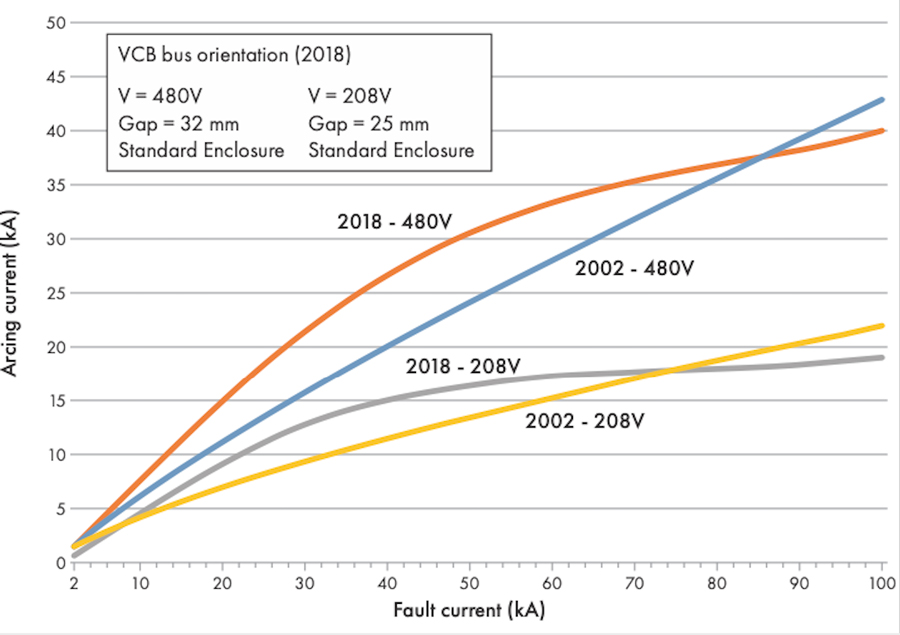
Figure 3: 2002 vs. 2018 Arcing Current Comparison at 208 V and 480 V
IMPACT OF CHANGES
The revised calculations per the 2018 edition of IEEE 1584 may result in changes to previously calculated arc flash incident energy values and changes in arc-rated personal protective equipment requirements for workers compared to the 2002 edition methods. The calculated incident energy may be higher in some situations and lower or very similar in others. With the possibility of significant changes in incident energy between the old method and the new method, and the changes to low-energy equipment, those responsible for facility electrical distribution systems — and the safety of workers — should consider revisiting their arc flash analysis to determine whether their workers are adequately protected against recognized hazards (OSHA’s General Duty Clause). One potential advantage of this re-evaluation is that, in some cases, workers may be able to perform some tasks with less-cumbersome PPE than previously determined.
Re-Evaluating Electrical Hazards
Given the 2018 changes to IEEE 1584, another critical question is whether you are required to update a study performed using the 2002 edition if there are no other factors to consider (changes in the facility electrical system or to the utility). No — there are no requirements that force you to update your study simply because IEEE 1584 has been updated. Remember, use of IEEE 1584 is voluntary and is not mandated by law. Other means can be used to calculate and determine the extent of electrical hazards associated with arc flash events. However, this document is one of the most recognized sources available, and the recent update makes it even more accurate for calculating arc flash incident energy levels. Should you choose to use another method to calculate the hazardous energy of an arc flash, expect your methods to be highly scrutinized and be prepared to defend them.
When considering whether an update is required or not, we shouldn’t forget about one key requirement from NFPA 70E, Standard for Electrical Safety in the Workplace.[2] You may not be required to update your study as a result of changes to IEEE 1584 methods and procedures, but NFPA 70E does require a review every five years of the data compiled and used to determine hazards. This ensures that, if there are changes to any factors used to determine the level of hazards (incident energy, arc flash boundary, etc.), the impact of these changes will be examined at least every five years. This is also an excellent time to incorporate the new IEEE 1584 methods and procedures into the analysis for the entire facility.
While you may not be mandated to update your study due to changes in IEEE 1584, should you perform an update?
Areas with higher operating voltages (480 V) and/or areas where there are horizontal electrodes (large power circuit breakers) are two circumstances where you might consider a revised study to ensure the calculated incident energy is accurate. These are areas where hazards may be significantly higher than calculated under the previous methods.
A second scenario where you might want to run a revised study is for equipment previously classified as low-energy equipment:
Equipment below 240 V need not be considered unless it involves at least one 125 kVA or larger low-impedance transformer in its immediate power supply.
The change to the requirements for equipment considered to be low risk (less than1.2 cal/cm2) is significant and will affect many facilities with existing arc flash studies. The revised parameters for low-energy equipment stem from the discovery that, under the previously defined parameters, workers could be exposed to IE levels above 1.2 cal/cm2. This important change may require the analysis of equipment not included in the previous arc flash study (i.e., equipment assumed to have IE below
1.2 cal/cm2).
Sustainable arcs are possible but less likely in three-phase systems operating at 240 V nominal or less with an available short-circuit current less than 2,000 A.
Equipment meeting new requirements that were not included in the previous study should now be included to ensure adequate PPE is identified based on the calculated IE levels for that equipment.
The biggest challenges of the new 2018 method are in determining the enclosure size and bus orientation of equipment. How are these challenges being handled? Some clients choose to use the worst case (horizontal electrode orientation) for all equipment. However, if the equipment does not contain horizontally oriented electrodes, this may result in excessive PPE requirements. Excessive levels of PPE can cause worker fatigue and inability to perform some tasks safely, which introduces additional hazards. Some help and guidance is provided in Annex G of IEEE 1584. Enclosure dimensions, electrode gap, and orientation can be standardized into a few categories, thus simplifying data collection while retaining the necessary level of accuracy.
Training and Education
As a final recommendation, one of the most often overlooked components of safety is education and training. Many companies transmit communications and display posters about the importance of worker safety but often neglect to invest in the required safety education and training for their workers. Old online training materials used repeatedly will lose their impact, and employees won’t pay attention to the training. Keep the training materials fresh and up-to-date and avoid repeating the same videos year after year. Training should allow and promote interaction, questions, and discussions. One of the best ways to communicate key objectives is through the use of case studies of incidents and accidents.
Training and education is not a one-size-fits-all solution. Employers must recognize that the education and training provided to one employee may be different than that for another employee (based on responsibilities, skill set, experience, or aptitude). Someone who operates an equipment disconnect, such as a machine operator, may not require the same level of training as someone who racks in a large power circuit breaker or troubleshoots electrical problems. While most workers don’t need to know how to calculate arc flash incident energy or arc flash boundaries to be able to execute their daily tasks, they do need to understand the factors that govern these values so they can make informed decisions about the required PPE and other safe work practices.
Everyone plays a vital role in safety. The more knowledgeable your workers are and the more dedicated to safety your company is, the less you place your workers at risk of injury. Employers must create a corporate work environment where safety is more than just a policy; it’s a culture!
CONCLUSION
Many excellent articles and papers are available that contain various perspectives on arc flash safety and electrical safe work practices. The more you read, the more you learn. I’ve learned a lot from reading papers, attending various conferences, and listening to experts speak on arc flash safety. One paper that recently crossed my desk caught my attention. In this paper, it stated that the new IEEE 1584-2018 still doesn’t calculate conservatively or accurately enough and additional correction factors (1.5-2.0X) to incident energy should be applied to ensure adequate PPE.[3] After reading this article, decide for yourself whether additional safety factors or multipliers are needed to keep your workers safe.
What I can conclude is that reported cases of workers being seriously injured or killed by arc flash are very low.[4] Granted, any serious injury or death is a tragedy, and we all must continue to strive for zero workplace injuries. However, the focus on safety, arc flash analysis, use of PPE, and education is keeping our workers safer than ever before. Let’s keep up that good work and continue to ensure our employees are trained to identify hazards, determine their severity, and select and use the proper PPE to perform their tasks safely.
With this in mind, never forget that working on energized equipment using PPE is a last resort! When the decision is made that energized work is required, you must have exhausted the other five methods of risk control: elimination, substitution, engineering controls, awareness, and administrative controls. Working on energized equipment and using PPE is at the bottom of the list and is the least effective means of ensuring worker safety.
REFERENCES
[1] IEEE. IEEE 1584-2002, IEEE Guide for Performing Arc Flash Hazard Calculations, New York, NY.
[2] National Fire Protection Association. NFPA 70E, Standard for Electrical Safety in the Workplace.
[3] Short, T. A., Eblen, M. L. “IEEE Standard 1584-2018 Predictions Compared With Tests on Real-World Equipment,” IEEE Industry Applications Magazine, January/February 2022.
[4] Gordon, L., J. Liechty, T. Matinez, E. Stromberg, and J. Williams. “Electric Injuries and Fatalities: Facts, Myths, and Unknowns,” IEEE Paper No. ESW32.
 Steve Park, PE, brings 40-plus years of experience in the power system industry to his position as Vertiv’s Director of Technical Training. In this role, Steve oversees technical training for Vertiv’s North America field services including AC power products, DC power products, thermal management systems, monitoring, and independent testing services for High Voltage Maintenance (HVM) and Electrical Reliability Services (ERS). Much of his career and expertise is from various roles while employed by HVM and ERS involving power system studies, engineering and test reports, cable testing, forensic investigations, test procedures/practices, and quality assurance. Steve gained a deep understanding of the power systems industry during his career in the U.S. Air Force, where he served 14 years on active-duty service as a high-voltage lineman, electrical power distribution engineer, and instructor of electrical engineering at the Air Force Institute of Technology (AFIT). Steve earned his BSEE and MSEE from Purdue University and an MBA from Indiana Wesleyan University. Steve has been a registered Professional Engineer since 1992.
Steve Park, PE, brings 40-plus years of experience in the power system industry to his position as Vertiv’s Director of Technical Training. In this role, Steve oversees technical training for Vertiv’s North America field services including AC power products, DC power products, thermal management systems, monitoring, and independent testing services for High Voltage Maintenance (HVM) and Electrical Reliability Services (ERS). Much of his career and expertise is from various roles while employed by HVM and ERS involving power system studies, engineering and test reports, cable testing, forensic investigations, test procedures/practices, and quality assurance. Steve gained a deep understanding of the power systems industry during his career in the U.S. Air Force, where he served 14 years on active-duty service as a high-voltage lineman, electrical power distribution engineer, and instructor of electrical engineering at the Air Force Institute of Technology (AFIT). Steve earned his BSEE and MSEE from Purdue University and an MBA from Indiana Wesleyan University. Steve has been a registered Professional Engineer since 1992.
